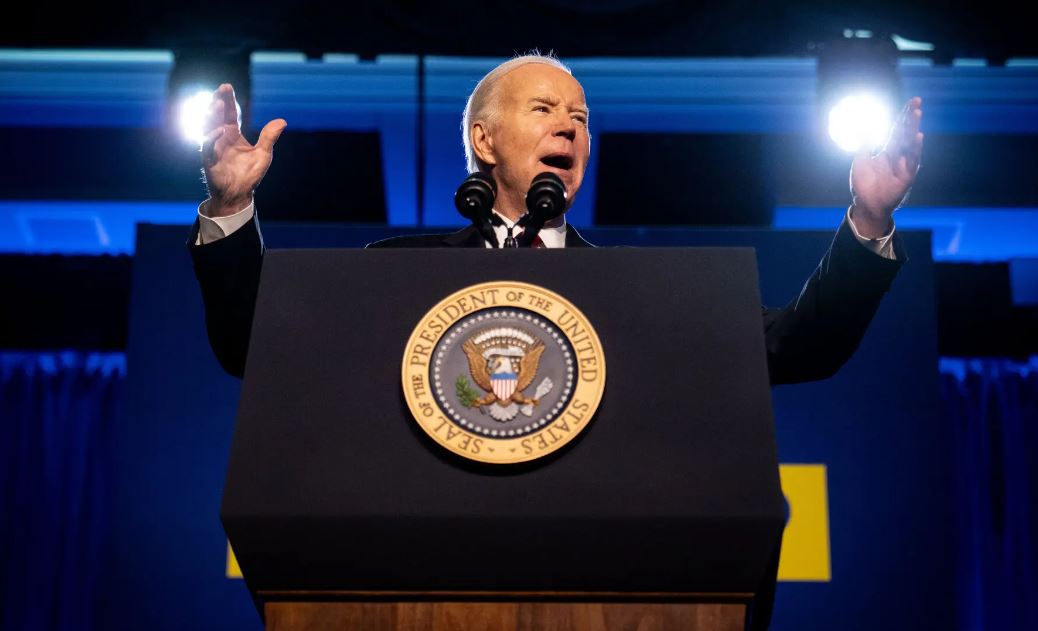President Biden maintained a notable, though not overwhelming, financial advantage over his key Republican opponent, former President Donald J. Trump, as the year concluded. This financial edge serves as a positive signal for the incumbent, who has faced challenges in generating robust enthusiasm among Democratic grassroots supporters.
According to filings submitted to the Federal Election Commission on Wednesday, Biden’s campaign reported having approximately $46 million in cash on hand at the end of December, compared to Trump’s campaign, which reported $33 million. While Biden faces nominal competition in the Democratic primary, his financial advantage is not as imposing as some within his party had anticipated. This is notable given that Trump has had to allocate resources to contend with primary rivals within the Republican Party. Trump’s political action committees have also directed $50 million towards legal expenses as he battles 91 felony charges.
The latest federal filings not only reveal the financial standing of the campaigns but also shed light on how the Biden campaign is deploying the millions it has collected. The largest expenditures include substantial amounts allocated to television and digital advertising, totaling over $16 million in the third quarter, as well as personnel costs. Reports indicate that the campaign had 72 staff members at the end of the year, with subsequent hiring bringing the total to over 120 employees.
While top-line fundraising figures were released two weeks ago, the final filings provide a more detailed breakdown of the Biden campaign’s financial landscape. In the last reporting period of 2023, the campaign, the Democratic National Committee, and three affiliated fundraising vehicles collectively raised $97.1 million and concluded the year with $117 million in cash.
The Biden Victory Fund, a joint fundraising account split between the campaign and Democratic state parties, played a pivotal role, contributing $66.9 million from individual donors. This fund allows individual donors to contribute up to $929,600, with the first $6,600 directed to the campaign itself.
T.J. Ducklo, a spokesperson for the Biden campaign, emphasized the stark contrast with Trump’s financial strategy, stating, “While Donald Trump lights money on fire paying the tab on his various expenses, Team Biden-Harris, powered by grass-roots donors, is hard at work talking to the voters who will decide this election and building the campaign infrastructure to win in November.”
Building on the earlier success of attracting donors who contributed less than $200, a key indicator of grassroots support, the Biden campaign and the Biden Victory Fund reported raising $17 million from such donors in the final quarter of the year. Establishing a robust network of small donors early in a campaign is crucial for sustained fundraising efforts later in the election cycle.
In the last three months of 2023, Biden’s political committees received contributions of at least $500,000 from 15 donors. Notable contributors include Hollywood mogul Steven Spielberg and his wife, Kate Capshaw ($929,600 each), technology executive Mark Pincus ($929,600), financier George Soros ($653,000), Avram Glazer, whose family owns the Tampa Bay Buccaneers and Manchester United soccer team ($538,289), former Google chief executive Eric Schmidt ($500,000), and Shonda Rhimes, the creator of “Grey’s Anatomy” ($100,000).
As the financial landscape continues to evolve, these figures provide insights into the fundraising strategies and donor support for both President Biden and his Republican opponent, Donald J. Trump, in the early stages of the 2024 election cycle.

